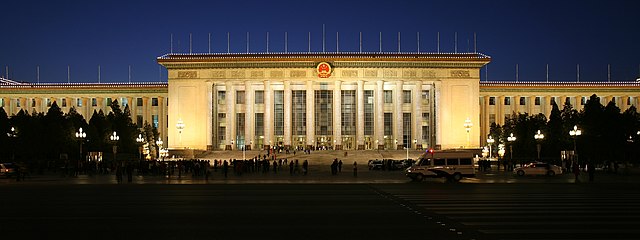1954 Constitution of the People's Republic of China
The 1954 Constitution of the People's Republic of China was adopted and enacted on September 20, 1954, through the first session of the First National People’s Congress in Beijing. This constitution was amended and formulated on the basis of the Common Program of the Chinese People's Political Consultative Conference, which served as a provisional constitution in 1949, and is the first constitution of the People's Republic of China. The Constitution of the People's Republic of China is the fundamental law of the People's Republic of China and has the highest legal effect.
The Central People's Government Committee adopted the Draft of the Constitution of the People's Republic of China on June 14, 1954.
A communist state, also known as a Marxist–Leninist state, is a one-party state that is administered and governed by a communist party guided by Marxism–Leninism. Marxism–Leninism was the state ideology of the Soviet Union, the Comintern after Bolshevisation and the communist states within the Comecon, the Eastern Bloc, and the Warsaw Pact. Marxism–Leninism currently still remains the ideology of a few parties around the world. After its peak when many communist states were established, the Revolutions of 1989 brought down most of the communist states, however, it is still the official ideology of the ruling parties of China, Cuba, Laos, Vietnam, and to a lesser extent, North Korea. During most of the 20th century, before the Revolutions of 1989, around one-third of the world's population lived under communist states.
The flags of the Communist Party of Vietnam that were flown besides the Vietnamese national flags in Hanoi, Vietnam
The meeting place of the Chinese National People's Congress



